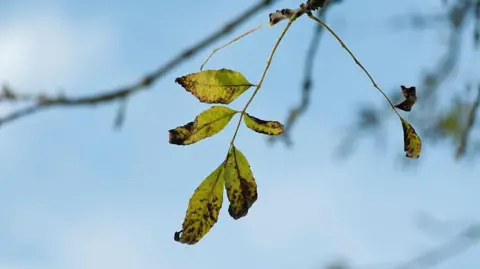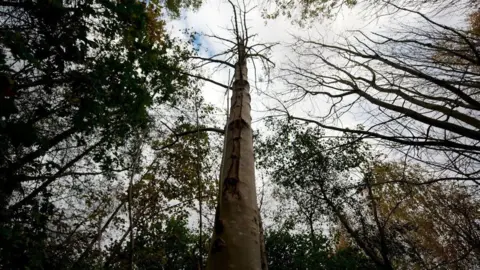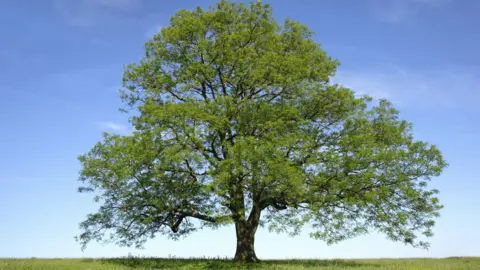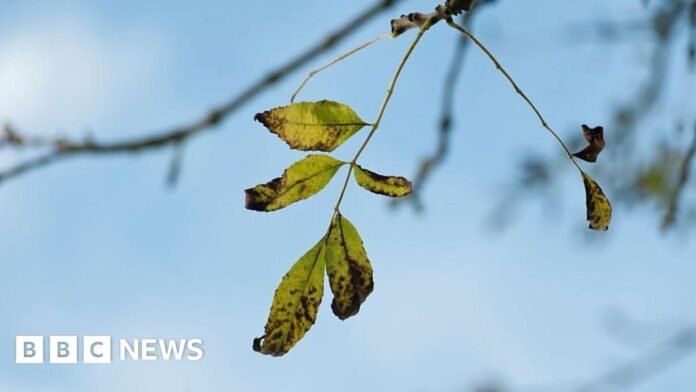 Getty Images
Getty ImagesAsh trees are fighting back against a disease that has ravaged the British countryside, new scientific evidence shows.
When ash dieback arrived in 2012, predictions suggested up to 85% of ash trees could be lost.
But now scientists have discovered that ash woodlands are naturally evolving greater resistance to the infection.
The discovery offers renewed hope that the much-loved trees will survive in the British landscape.
 Getty Images
Getty Images“It is hope born out of the death of a lot of trees,” said Prof Richard Buggs of the Royal Botanic Gardens Kew, and Queen Mary University of London.
But he said other interventions would be needed to give ash trees a helping hand, such as protecting trees from grazing deer and breeding the most resilient trees for future planting schemes.
“We have fresh motivation to look after our ash populations, to protect them from other problems like deer browsing, and to let nature take its course and evolve trees with more resistance,” he told BBC News.
The Ash dieback fungus originated in Asia and was introduced to Europe about 30 years ago.
The study of ash trees at a woodland in Surrey revealed subtle shifts over time in different genes, which should help new saplings fight back against it.
The trees are evolving greater resistance to the disease than their predecessors – an example of Charles Darwin’s natural selection theory in action.
Richard Nichols, professor of evolutionary genetics at Queen Mary University of London, said a “tragedy for the trees has been a revelation for scientists: allowing us to show that thousands of genes are contributing to the ash trees’ fightback against the fungus”.
 Paul Figg © RBG Kew
Paul Figg © RBG KewAsh dieback demonstrates how devastating introduced pathogens can be for our trees and the species which rely upon them, said Rebecca Gosling of the Woodland Trust.
“The findings highlight how vital it is to support natural regeneration in woodlands, furthering our understanding of how to best manage our ash woodlands,” she said.
Scientists had feared the ash would go the way of the elm, which has been almost wiped out by Dutch elm disease.
The loss of the native tree would have a devastating effect on biodiversity as well as changing the face of the landscape.
 Getty Images
Getty Images






